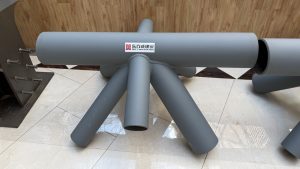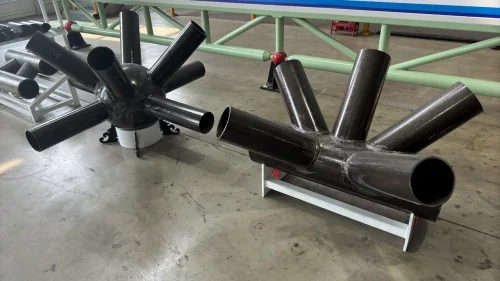Steel Pipe Truss
A steel pipe truss is a structural framework made from steel pipes (circular hollow sections, CHS) arranged in interconnected triangles to efficiently carry and distribute loads.
-
Unlike I-beam or angle trusses, pipe trusses are torsion-resistant due to their closed cross-section.
-
The smooth round shape gives both strength and architectural elegance.
Structural Components
-
Top Chord
-
The uppermost member, typically under compression.
-
Can be straight or curved depending on the roof shape.
-
-
Bottom Chord
-
The lowest member, usually under tension.
-
-
Web Members
-
Diagonal members: transfer loads between top and bottom chords.
-
Vertical members: provide stability and help with load distribution.
-
-
Nodes / Joints
-
Where members meet. Can be welded, bolted, or cast-steel ball nodes in 3D space trusses.
-
Advantages
-
High strength-to-weight ratio — supports large loads with relatively light material.
-
Efficient load distribution — triangular geometry reduces bending moments.
-
Aesthetic appeal — clean, modern look with slim, curved, or tapered members.
-
Versatility — adaptable to straight, curved, or spatial designs.
Applications
-
Airport hangars & terminals
-
Sports arenas & stadium roofs
-
Exhibition halls
-
Industrial workshops
-
Long-span pedestrian & vehicular bridges
-
Outdoor canopies & awnings
Design Considerations
-
Pipe diameter & wall thickness depend on span, loads, and local building codes.
-
Material grade often uses ASTM A500, Q235, Q345, or equivalent.
-
Welding quality is critical to avoid stress concentration.
-
Deflection control is important for long spans.
-
Surface treatment — hot-dip galvanizing or epoxy painting for corrosion protection.






Reviews
There are no reviews yet.